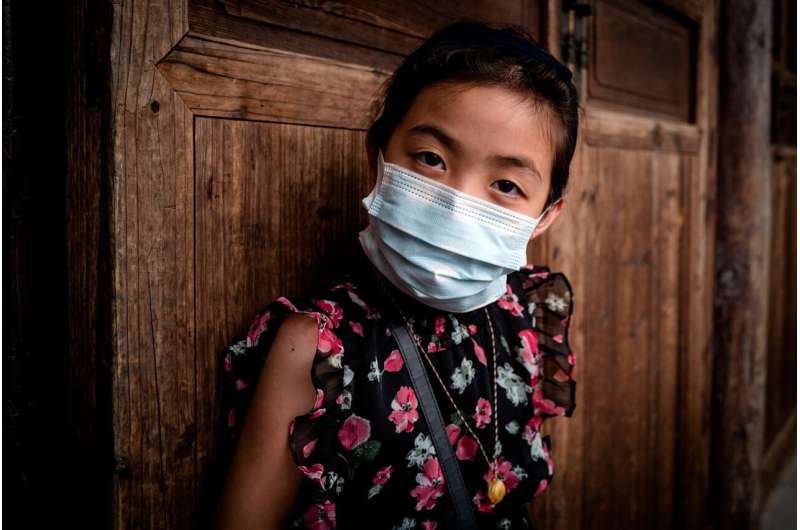
Already weary from two years of navigating parenthood during a pandemic, parents are facing a new stress: What to think about surging numbers of kids diagnosed and hospitalized with COVID-19.
Statistics show both have reached a pandemic high.
For the week ending Jan. 20, 1.1 million child COVID-19 cases were reported, a 17 percent increase over the week before, and double the case counts from two weeks prior, according to a report from the American Academy of Pediatrics and the Children’s Hospital Association.
Overall, the numbers are five times higher than the rate of the peak of last winter’s surge.
The biggest increase in pediatric hospitalizations is being seen in children under age 4—too young for vaccination—which surged to more than four in 100,000 children this month, double the rate reported a month ago and about three times the rate at this time last year, according to the U.S. Centers for Disease Control and Prevention.
“What used to be the average number of children with COVID for the whole hospital is now the average just for the intensive care unit,” said Dr. Jessica Ericson, pediatric infectious disease physician at Penn State Health Children’s Hospital. “Back in October, we were seeing three to five children hospitalized at a time, and now we’re averaging about 20 children at a time, with five in the ICU.”
Most children with COVID-19 will experience “no-big-deal” symptoms such as sore throat, runny nose and fever, Ericson said, but other children will have trouble breathing and need to be hospitalized to get oxygen support, and still others will need ventilators or other respiratory support.
Best protection—get vaccinated
Three groups of children appear to be most susceptible, Ericson said:
- Newborns whose immune systems are weak simply because they are newborns.
- Children with high-risk medical conditions such as cancer or a genetic syndrome or who are too young to be vaccinated.
- Teenagers unvaccinated by choice who are overweight or obese.
One thing appears certain—vaccination makes a big difference in kids, just as it does in adults.
“We are not seeing many vaccinated children needing hospitalization, even among those high-risk children,” Ericson said.
However, the CDC reports that just 50 percent of children ages 12 to 18 and only 16 percent of kids ages five to 11 are fully vaccinated.
“Two percent to 5 percent of children end up needing to be admitted for a COVID-related problem, and you don’t know if your child will end up being in that group or not,” Ericson said. “Why not reduce that risk with a vaccine that’s been proven safe and very effective at preventing serious illness and complications?”
Looking at the larger picture, if numbers continue to soar and every child ends up getting the virus, there aren’t enough hospital beds to accommodate the 2 percent to 5 percent of America’s children who will need hospitalization, Ericson said.
Link to longer term health problems
On the heels of pandemic-high pediatric infections comes another piece of troubling information—a recent CDC study shows children and teens who had COVID-19 are more than twice as likely to be diagnosed with diabetes within the month after infection than children who have not had the virus.
“I have seen it at our hospital—children coming in who suddenly have severe dehydration, seizures and coma, and when we start investigating, we find they had mild symptoms of COVID a few days earlier,” Ericson said. “I have seen it enough to say I’m confident it’s related. COVID is very inflammatory, and diabetes is related to inflammation.”
Researchers aren’t sure whether these children were pre-disposed to diabetes, but they say the virus seems to attack insulin-producing cells in the pancreas.
“This is another reason that parents should really consider vaccinating their kids,” Ericson said. “Diabetes is a serious diagnosis with lifelong implications.” She noted she has seen a similar link to kids coming in with appendicitis who recently had COVID.
Navigate with flexibility
So, what’s a parent to do with this new information? On top of ever-changing safety protocols, school policies and people’s personal preferences, it can seem overwhelming.
“Parents are constantly trying to gauge risk, and it’s exhausting,” said Ericson, who knows the challenge firsthand as one of her children is under age five and not eligible for vaccination. “It’s hard to know, when everyone is trying to get back to normal, what is safe for your household?”
Here are some tips she uses herself and offers to other parents:
- Give your kids clear expectations on what risks you are willing to take and the reasoning behind them in terms they can understand.
- As invitations to another child’s birthday party, a playdate or a new setting come up, take time to ask yourself, “Is this the right time for my child to go here?” Answers will depend on individual circumstances—is there a vulnerable person living with us? Is the event outdoors? What precautions will be in place?
- Familiarize yourself with guidelines for quarantining and masking at your child’s school and decide if you want your child to do more. The school policy is the minimum, and parents should feel free to make the best choice based on their child’s symptoms and circumstances.
“Overall, I think it’s useful for us to hold all our plans loosely,” Ericson said. “Make plans, but if someone is ill or was exposed or you know people won’t be wearing masks, change your plans and let your kids know you’re doing your best to keep everyone as safe and healthy as you can.”
Pennsylvania State University

